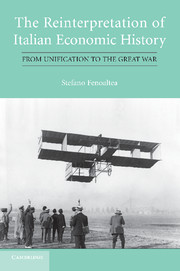Book contents
- Frontmatter
- Contents
- List of Tables
- List of Figures
- Acknowledgments
- Preface
- Introduction
- 1 The Time Series and the Interpretations
- 1A The Measurement of Production Movements
- 2 The Investment Cycle
- 3 The Consumption Cycle and the “Crisis” of the 1880s
- 4 Protection and Migration
- 5 Railways
- 6 North and South
- 6A North and South: A Sectoral Analysis
- 7 The State of Play
- APPENDICES: TARIFFS, TRADE, MIGRATION, AND GROWTH
- References
- Index
2 - The Investment Cycle
Published online by Cambridge University Press: 05 March 2012
- Frontmatter
- Contents
- List of Tables
- List of Figures
- Acknowledgments
- Preface
- Introduction
- 1 The Time Series and the Interpretations
- 1A The Measurement of Production Movements
- 2 The Investment Cycle
- 3 The Consumption Cycle and the “Crisis” of the 1880s
- 4 Protection and Migration
- 5 Railways
- 6 North and South
- 6A North and South: A Sectoral Analysis
- 7 The State of Play
- APPENDICES: TARIFFS, TRADE, MIGRATION, AND GROWTH
- References
- Index
Summary
The “political cycle”: birth, death, and life after death
The first index constructed by the present author was dominated by the cycle of the metalmaking and engineering industries, which followed the parallel cycle in the consumption of their products.
Since those products were then almost exclusively “producer durables” (investment goods), that consumption cycle was interpreted as an investment demand cycle. Investment demand is naturally unstable, precisely because it is a demand for durable goods. Investment renews, and “net” investment increases, the stock of physical capital; and the durability of that stock has two immediate consequences. First, the desired stock of capital depends on the expectations of the businessmen who plan production; those expectations are surrounded by uncertainty, and, like those that determine the movements of financial markets, subject to sudden change. Second, a permanent increase in the desired stock of capital generates only a transitory demand for the net investment that increases that stock. Investment will be high when business wants to increase its stock of productive capital, and low when it wishes only to maintain it or even to reduce it.
The desired stock of capital increases as expected production does: as the latter grows so does the former, raising investment demand. In the case at hand, however, the investment cycle did not seem to have been set in motion by a cycle in the growth of the other sectors, which grew quite steadily; rather, the investment cycle seemed due to changes in the desired stock of capital for given levels of production.
- Type
- Chapter
- Information
- The Reinterpretation of Italian Economic HistoryFrom Unification to the Great War, pp. 67 - 108Publisher: Cambridge University PressPrint publication year: 2011

